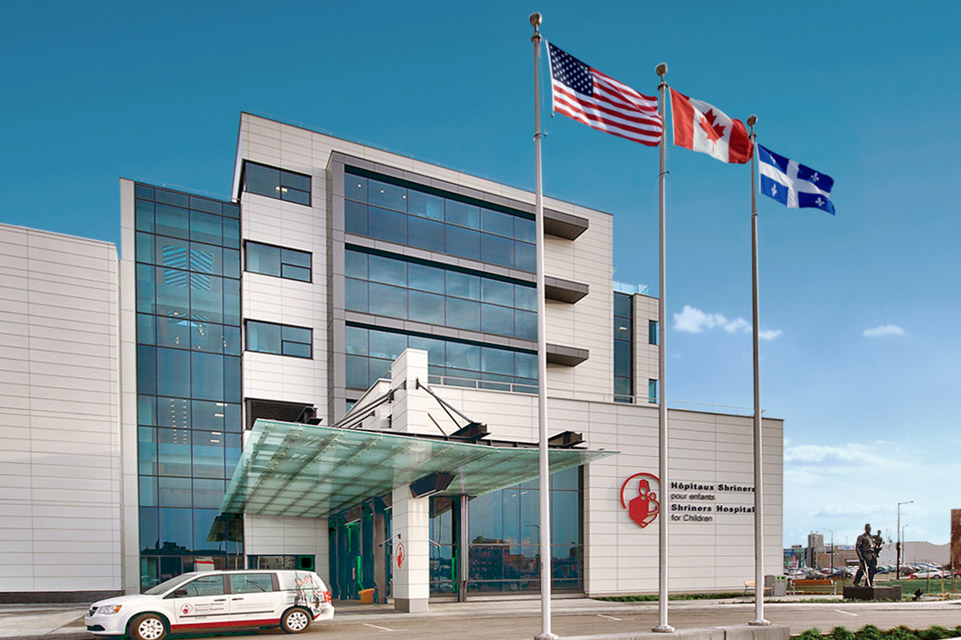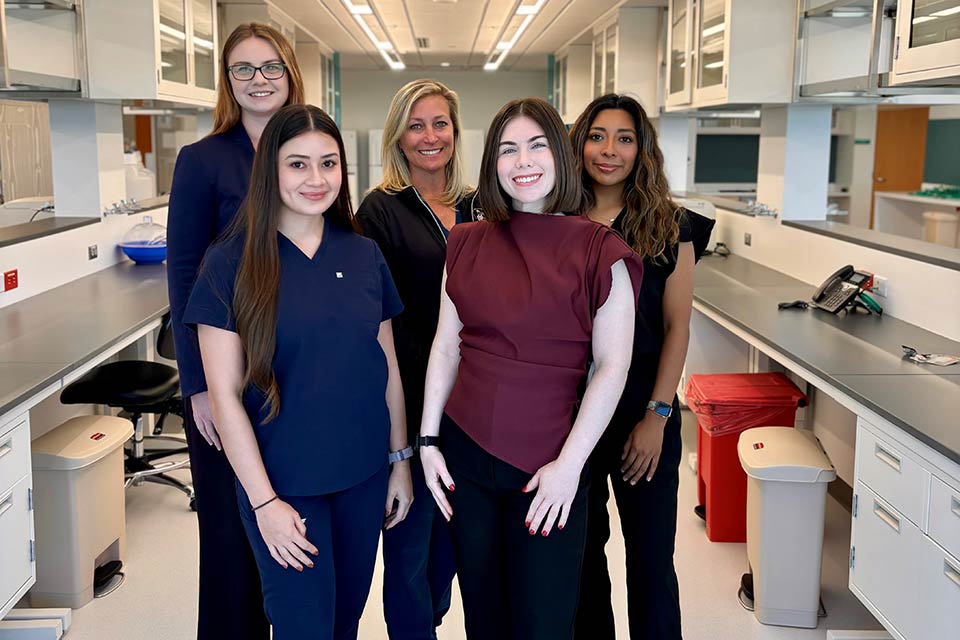A Potential Step Forward in Burn Care Treatment

Dr. Aslihan Gokaltun, a scientific staff member at Shriners Children's, and Dr. O. Berk Usta, an associate investigator at Shriners Children’s Boston, stand in front of a poster detailing their research.
Less pain, quicker healing, and minimizing the potentially life-threatening risk of infection could soon be a reality for burn survivors at Shriners Children’s. Inspired by our pediatric patients and the clinicians who work with them, Aslihan Gokaltun, Ph.D., a principal investigator at Shriners Children’s Boston, is leading a hydrogel research study, which began in 2020. Working with O. Berk Usta, Ph.D., an associate investigator at Shriners Children’s Boston, the pair bioengineered a first-of-its-kind hydrogel to help make the treatment process less uncomfortable for second-degree burn survivors.
“I witnessed many pediatric burn patients, explaining they were feeling under constant stress when it was time to change their dressings,” explained Dr. Gokaltun. That’s when she decided to explore how to make the process less painful.
“Research was done, and clinicians were asked what they would like to see in a burn dressing?’ They said it should be easily removable and pain-free,” Dr. Usta explained.
Hydrogels are typically applied directly onto wounds and then covered with gauze or similar protective dressings. These gels consist of a network of interconnected polymers, forming a mesh of highly-absorbent material. “Hydrogel can absorb a lot of water like a sponge, which can provide a moist environment for the wound,” explained Dr. Gokaltun. “It also cools and soothes the wound, which can accelerate the healing process.”
Current hydrogel dressings often adhere to wounds and necessitate removal, sometimes even requiring surgical intervention. This process can lead to "delayed healing, traumatization of newly-formed tissue, and severe pain for the patient," explained Dr. Gokaltun. To overcome these problems, the team’s objective was to create a hydrogel that could be rapidly dissolved on demand by a doctor, minimizing the reliance on medications, prolonged hospital stays and costs.

A pediatric patient wearing pressure garments receives burn care at Shriners Children's.
Robert Sheridan, M.D., chief of staff and director of burn service at Shriners Children's Boston, is an advisor on this study. Dr. Sheridan is active in burn and trauma care, and has published hundreds of papers. Dr. Usta said, “Aslihan read one of the papers where Dr. Sheridan highlighted these painful procedures. She reached out to Dr. Sheridan and he gave us some guidance.”
When Dr. Gokaltun presented our idea to help burn survivors, Dr. Sheridan told her, “It’s the right problem to solve.”
Dr. Sheridan helped Dr. Gokaltun with clinical shadowing. She began observing pediatric patients in the clinic and on the inpatient unit at Shriners Children’s Boston. “I saw dressing changes, different types of burns, and all the steps they apply for burn treatment of the patient, so this was really rewarding for me,” explained Dr. Gokaltun.
This first-hand experience helped her hydrogel design. What makes our hydrogel so unique is its efficiency with dressing changes, which normally take one to three hours of work for medical professionals. “The newly-developed hydrogel can be dissolved in about five minutes by using a solution that breaks apart its molecular structure, and it poses no detrimental effects on adjacent skin cells,” said Dr. Gokaltun. The new hydrogel decreases the time of dressing changes, as well as the pain of these procedures. Researchers say it is also an alternative to heavy medication and sedation used on children to relieve discomfort. "This procedure will allow clinicians to reduce the use of the pain relievers, opioids and anesthesia, which is a great advantage for the kids,” said Dr. Gokaltun.
There is still work to be done before the hydrogel is available in the patient setting. Experiments and research are being conducted on a small scale. The next step is increasing the size of the hydrogels so nurses and doctors can use the product. As for incorporating the hydrogel into the hospital setting, both researchers believe it is straightforward for medical staff to use. Dr. Gokaltun said, “It doesn't necessitate any additional steps beyond the current treatment. Clinicians will simply clean the wound, apply our hydrogel dressing, and cover it with a bandage to secure the hydrogel in place.”
Research is one of the pillars of the Shriners Children’s mission. The work happening in the labs at Shriners Children’s Boston creates incredible opportunities for children, all to improve the care given to pediatric patients. “The mission of our research program is very simple. We want to help improve the lives of these kids,” explained Shriners Children’s Boston Director of Research Mehmet Toner, Ph.D. Shriners Children’s Boston research has contributed to the care of patients with burn injuries and other skin conditions around the world. “It's quite an exciting environment where we try to think about the things for the next five, 10 and 20 years, while our clinicians are saving lives today,” said Dr. Toner.
“The nice thing about this material is it actually has many other possible applications,” said Dr. Usta. “We are grateful it spurred this type of material development, which can potentially solve many medical problems.” Both Dr. Usta and Dr. Gokaltun are very excited about this project, and to have a first-hand experience with burn survivors at Shriners Children’s Boston. “I think if we weren’t in this building, we wouldn’t be aware of this problem,” said Dr. Usta.
Keep In Touch
Join our mailing list to stay up to date on everything that's happening at Shriners Children's.



